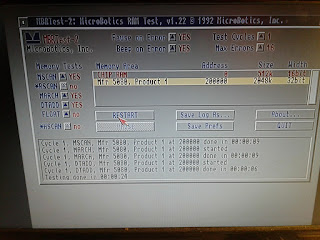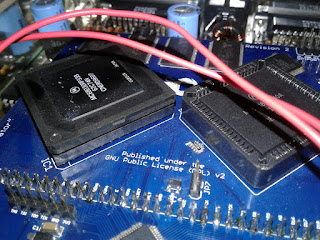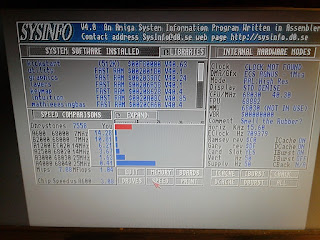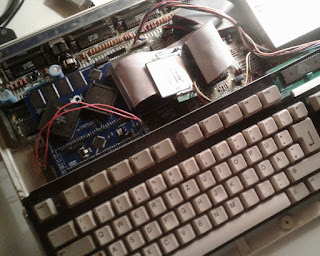 |
| Original rechargeable battery from an A501 memory expansion |
But still it would be nice to have a working backup battery installed to your machine. Coin-cells, type CR2032, are a good replacement, they're widely available, and do not leak. But keep in mind that these aren't rechargeable - the Amiga provides recharge-current to it's batteries, so when replacing the original rechargeable one, we need to take care of that to avoid (additional) damage.
Removing the rechargeable VARTA battery shouldn't be a problem, you just need a soldering iron. Next is the cleaning - and if you're unlucky - repair job.
When you're done so far you can install you coin-cell. The original VARTA batteries are 3.6V. CR2032 coin-cells are 3V, that's within range for the clock chips used in Amiga 500 pluses and A501 memory expansions (mostly OKI M6242 chips).
With some googling I found Daniel Schneller's nice article on how to do the replacement. He's done what's required, and added a few details, mainly putting the new battery on a separate board to avoid stress to the original PCB when exchanging the coin-cell in the future - an idea I like very much. I basically did the same, but wanted to keep my A501 in "one-piece", so I decided to put the extra board onto the A501 itself. According to one CR2032 manufacturer's docs, a diode and a 200 ohms (minimum) resistor are required to keep the Amiga's recharge-current away from the new, non-rechargeable battery. I'm using a 220 ohms resistor, just for a little bit of extra-safety.
Here's a schematic of the new battery board:
 |
| Battery board schematic (click to enlarge) |
Nothing spectacular - have a piece of drilled board ready, the components as shown in the schematic, add a coin-cell holder, wires, and pin headers, and basically all that's left is the soldering.
 |
| New coin-cell battery on a separate drilled board |
 |
| The extra board is held in place by double-sided sticky tape |
I'm quite pleased with the result! It doesn't look totally amateurish, there's close to zero modification to the original PCB, the sticky tape should keep the new board properly in place - and if I should ever want to do so, I could probably revert the modification completely.
And best of all: it works. :-)
Thank you very much, Daniel Schneller, for sharing your know-how and experience!
Sources:
http://www.danielschneller.com/2018/02/amiga-500-restoration-a501-memory.html
http://www.farnell.com/datasheets/1496885.pdf
http://thomas-rapp.homepage.t-online.de/index.html
http://thomas-rapp.homepage.t-online.de/download/RestartClock.lha






